

"Bazaar at Madras," an engraving from 1875
Source: ebay, Apr. 2008
 |
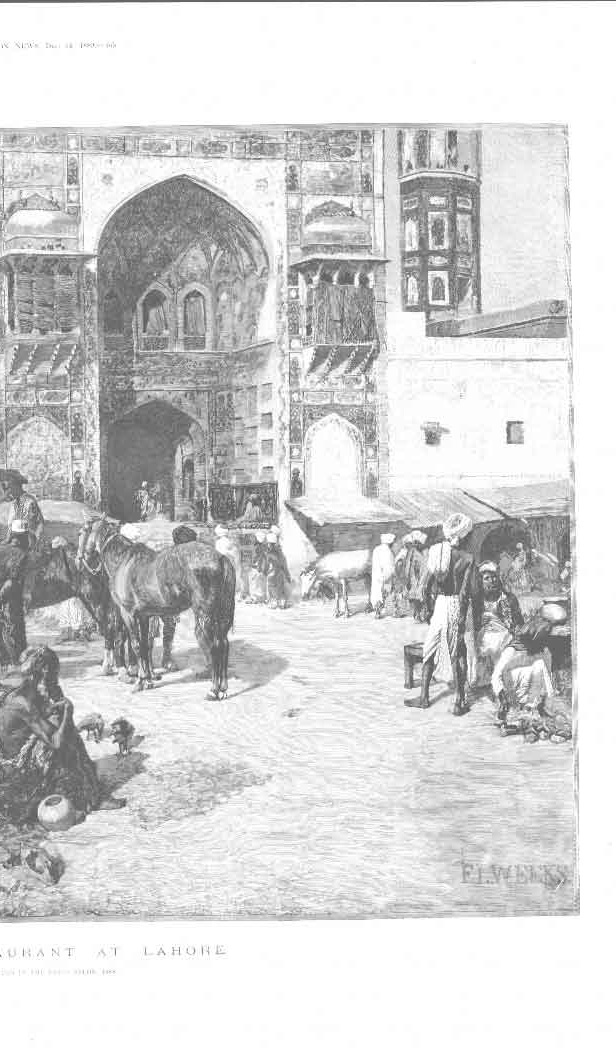 |
"An Open-Air Restaurant in Lahore" (in front of the *Mosque of Vazir Khan*), by Edwin Lord Weeks; a wood engraving, Illustrated London News, 1889: very large scans of this engraving: *upper left*; *upper right*; *lower left*; *lower right*
Source: ebay, Dec. 2002

The actual colors of the painting
Source:
http://upload.wikimedia.org/wikipedia/commons/5/5d/Weeks_Edwin_Lord_An_Open-Air_Restaurant_Lahore.jpg
(downloaded Sept. 2013)
"Edwin Lord Weeks (American, 1849-1903). An open-air restaurant, Lahore; signed and dated 'E.L. Weeks' (lower right); oil on canvas. 62 x 96¾ in. (157.5 x 245.7 cm.). Painted circa 1889.
An open-air restaurant, Lahore is one of Edwin Lord Weeks' most notable, widely-exhibited canvases. It is one of perhaps half a dozen monumentally-sized canvases, and was executed in the artist's Paris studio circa 1889, about two years after his second expedition to India. The end of the 1880s was a fertile period for the artist, executing a number of his most important Indian paintings during that time. The present painting was exhibited along with The hour of prayer at the Pearl Mosque, Agra at the Paris Salon of 1889, where he was awarded a Gold Medal.
This painting depicts a restaurant stall in the marketplace situated in the open plaza in front of the Mosque of Vazir Khan in Lahore. Weeks relates his impression of the scene in his expedition narrative: '...There is, in truth, a good deal of life and movement to be seen from the crumbling steps of Vazir Kahn; there are two domed edifices...which now shelter various trades beneath the rude thatched awnings projecting from their eaves...and in the middle of the square there are open-air restaurants, where great kettles of tinned copper stand upon platforms elevated above the ground and surrounded by rough benches; sooty frying-pans sizzle on little clay furnaces, and the keepers of these restaurants sit enthroned among their cooking utensils...In the middle of the day, the benches are crowded with customers, who have the appearance of being peasants from the outlying country...A great deal of horse-shoeing and veterinary practice is carried on in one corner, under a great tree...' (Edwin Lord Weeks, From the Black Sea Through Persia and India, New York, 1895, pp.187-180).
Weeks executed a number of paintings and studies of the front, as seen here, and courtyard of the mosque of Vazir Khan. In the present work, the beautifully painted façade occupies a prominent part in the composition. It is a testament to the artist's great talent that the accomplished handling of figures and architecture under the blazing Indian sunlight lends the composition a palpable presence, whose unaffected capture of an observed moment belies its measured execution as a studio work.
The particular lack of contrivance of "An open-air restaurant,
Lahore" is the result of its direct connection to an in situ
sketch. Unlike many of his other major paintings, which are built
up from a series of architectural sketches combined with figure
studies, the present painting was developed from an 11½ x 19½ inch
in situ sketch featuring all of the elements contained in the
final, monuemental composition. Thus, the final painting takes us
directly back to Weeks' observation of an expedition scene in a
complete and truthful sense; a tribute to his remarkable skill as
a draftsman in the academic tradition."
[http://www.christies.com/LotFinder/search/LotDetail.asp?sid=&intObjectID=4305690&SE=CMWCAT03+209854+1173394984+&QR=M+1+45+Aqc0000900+180100++Aqc0000900+&entry=india&SU=1&RQ=True&AN=46
(downloaded May 2004]
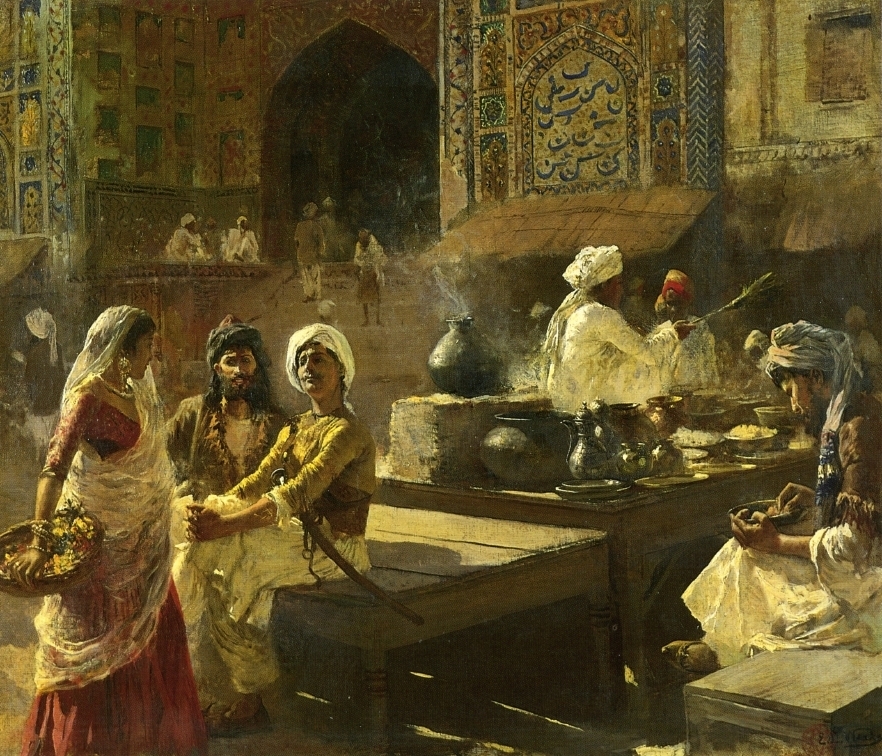
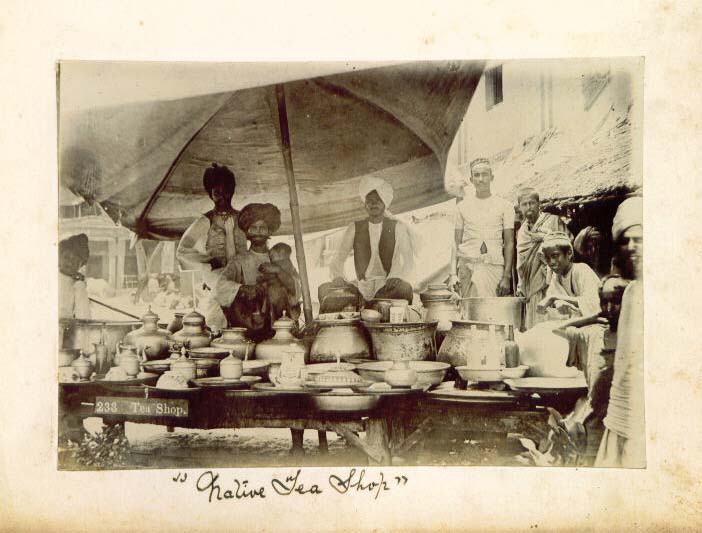
"Native tea shop," Simla, 1890's
Source: ebay, Apr. 2007
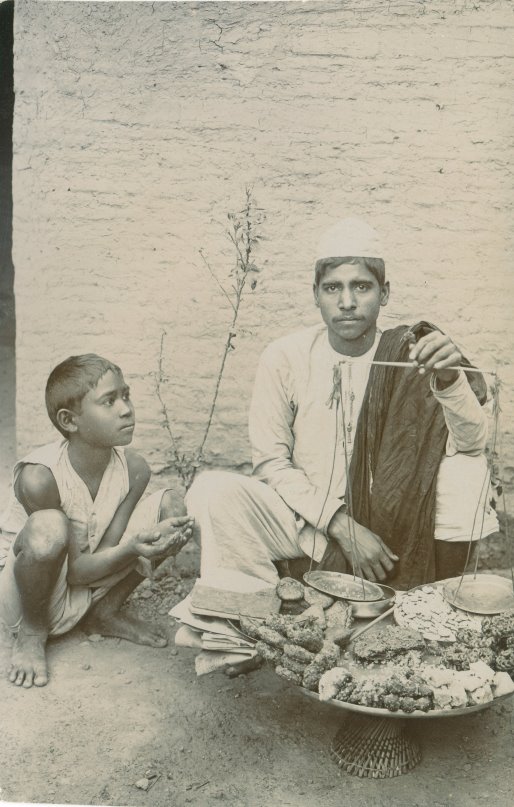

Roadside vendor, 1916; perhaps Karachi?
Source: ebay, May 2008
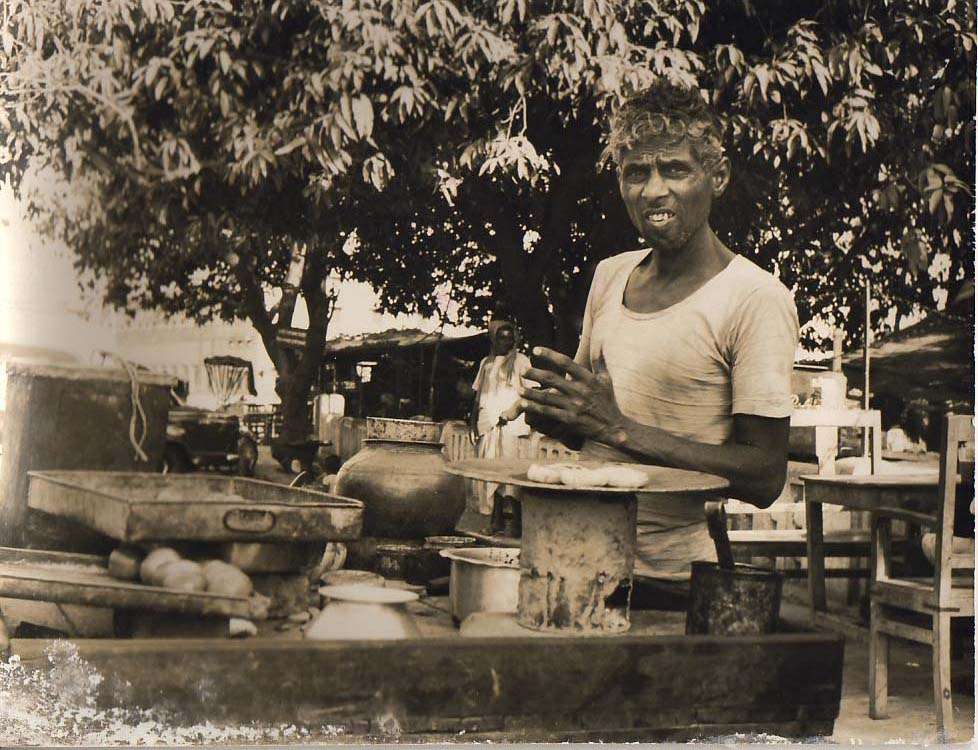
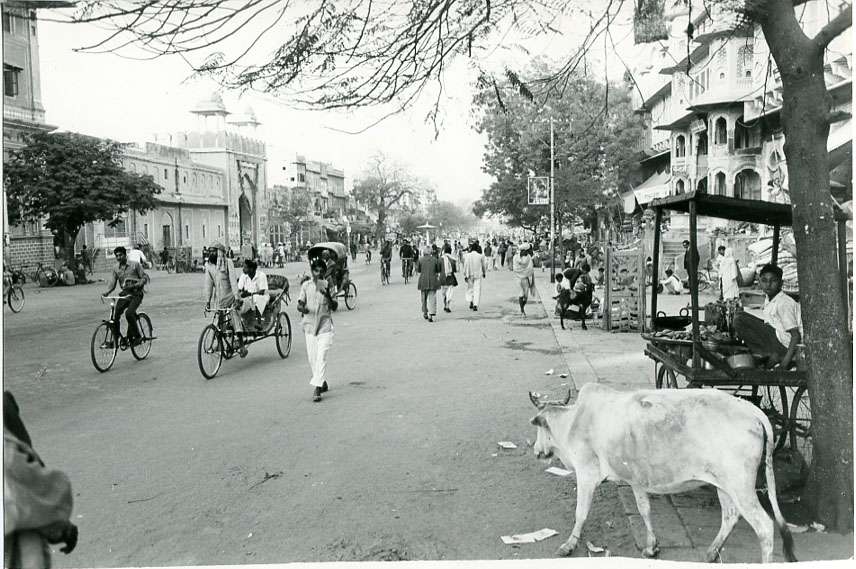
== Indian Routes index == Indian Routes sitemap == Glossary == FWP's main page ==